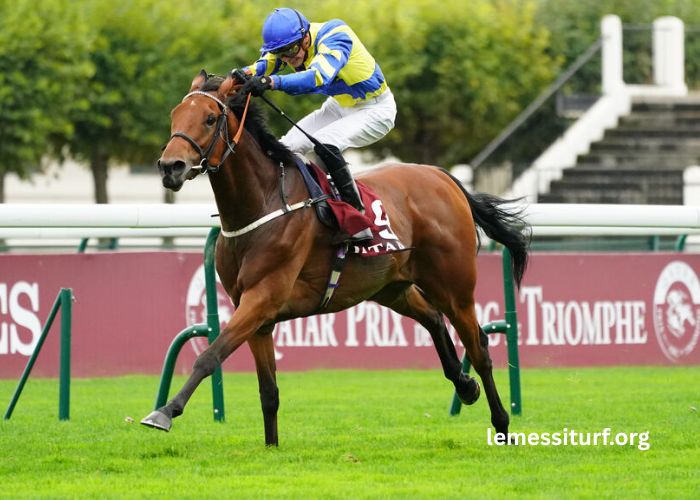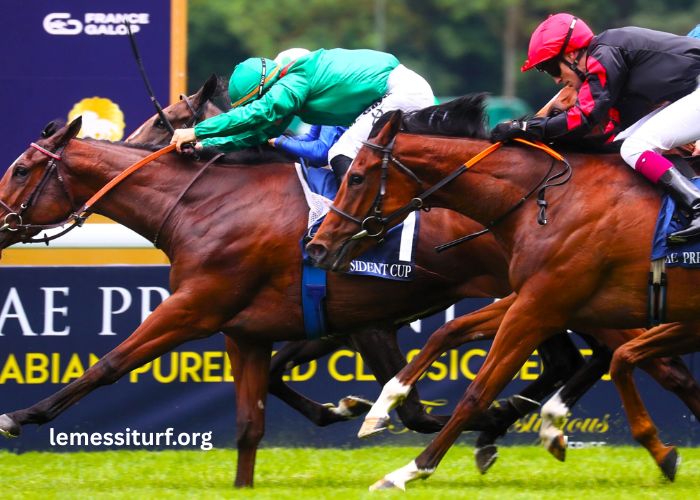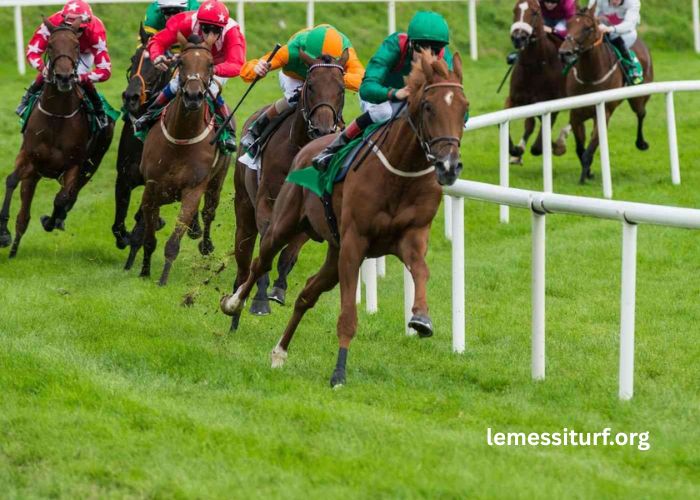In the dramatic world of horse racing and turf betting, bettors uses many strategies to increase their chances of winning turf betting. One of most important methods in turf betting is triangle du quinte. It has been the most talked about strategy over years. This unique and tricky strategy gives bettors to think about place the betting when it comes to the famous Quinte+ races.
The triangle du quinte is to be careful analysis and understanding of the turf racing. It helps bettors to make a smart move instead of just guessing which horse is gonna be the winner. If anyone catch the strategy, even when new bettors can move forward and feel more confident about their choices.
This blog post will explain everything you need to know about the triangle du quinte in a simple and easy-to-understand way. Whether you are completely new or already familiar with turf betting, this guide is designed to help you apply the strategy and possibly improve your results.
3 Key Points:
- The triangle du quinte helps to manage your racing strategies.
- It focuses on key portions like form, jockey, and track.
- It offers a new point of view for analyzing turf races.
The Basics of Triangle Du Quinte
The triangle du quinte is a betting method that will provide you frameworks for selecting horses in Quinte race. This Quinte+ is basically involve selecting five horses from a larger field. Instead of selecting them randomly or based solely on luck, this strategy helps you select smartly.
Suppose you’re drawing a triangle and, every corner of the triangle stand for important things.
- Horse Form: Here you’ve to check the performance quality of a horse.
- Jockey Performance: The performing skills and winning records.
- Track Conditions:Which ground it can perform well, it can be dry or wet.
In the Triangle Du Quinte Strategy the horses used to betting score well in at least two of these three areas. For example if a horse has been doing well recently, and is paired with skilled jockey. It become strong candidate. This reduced guesswork and gives you more logic behind your selection. Imagine drawing a triangle. Every corner of this triangle represents a key factor that affects a horses performance.
Many experienced bettors find this method helpful because it adds logic to betting. Rather than relying only on luck, triangle du quinte builds a system that’s easy to follow.
Reminder: Always look at recent race results when judging horse form. It tells you a lot about how the horse might perform today.
History And Origin Of Triangle Du Quinte
Understanding where a strategy comes from can give you detailed information about how it works. The Triangle Du Quinte didn’t develop overnight. It came about through years of observation of turf betting patterns, particularly in French racing circle where Quinte+ races are very popular.
Historically, Europe’s turf betting everyone follow strongly. From casual rome fans to professional punters, many of them are looking for their chances. As betting has become more data- centric, Triangle Du Quinte has emerged as the betting strategy more exciting.
Today, many forums, blogs, and betting communities talk about triangle du quinte. Some even use software tools that highlight horses fitting the triangle profile. It shows that the strategy is growing and gaining more attention among serious bettors.
Note: The triangle du quinte may have started in France, but its logic applies to races worldwide.
How To Apply Triangle Du Quinte In Real Betting
If you want to use Traingle Du Quinte properly, then you must need to know how to research each and every part of triangle. Let’s discuss about in below,
Step-by-step Approach:
- Look at Recent Horse Form: Check the Jockey: Who has finishes 3to 5 races in recent time. Is he/ she have winning records.
- Review Track Conditions:Check if the horse perform well in wet or dry places.
Here’s how it works in practice:
Let’s say you have a list of 14 horses in a Quinte+ race. First, remove any horses that have poor recent form (finishing near the bottom). Then check which of the remaining horses have jockeys with strong records. Finally, compare those against the day’s track condition. If the horse performs well under current conditions, it becomes part of your “triangle.”
When done right, you will usually be left with 4-6 strong candidates. From there, you pick your top 5 for the race. This gives your bet more structure and reason.
Example Table: Horse Analysis Checklist
| Horse Name | Form (Last 3 Races) | Jockey Win % | Track Match? |
| FastThunder | 1st, 2nd, 3rd | 22% | Yes |
| LuckySky | 7th, 6th, 8th | 15% | No |
| SpeedKing | 2nd, 1st, 2nd | 18% | Yes |
Use this kind of table to simplify the triangle du quinte selection process.
Risk Management Within The Triangle
As like betting strategy, the Triangle Du Quinte has its risks. Even the most analyzed race can be a surprise. That’s the reason risk management is very important. First, never put your bankroll on a single race.
The idea is to stay in the game for the long run. Even with the Triangle Du Quinte, you may not win every time, but your chances will be increased if you keep trying.
First, never bet your entire bankroll on one race. The idea is to stay in the game long-term. Even with triangle du quinte, you may not win every time, but staying consistent increases your chances.
You can also split your bets:
- Base Bet: Use triangle du quinte to pick your top 5 horses.
- Safety Bet: Back two or three horses separately as insurance.
- Exotic Bet: Try a Trio or Quarté if your confidence is high.
Table: Risk Type and Strategy
| Risk Level | Suggested Strategy | Bet Example |
| Low | Bet on top 2 horses | Win/Place |
| Medium | Follow triangle picks | Quinte+ Combination |
| High | Bet on exotic outcomes | Trifecta, Superfecta |
By spreading your bets and staying within your budget, triangle du quinte becomes safer to use.
Reminder: No strategy is 100% safe. Be sure to set a limit and stick to it.
Adapting Triangle Du Quinte To Different Race Types
One of the great things about the Triangle Du Quite is how much flexible it is. Weather the race is short or long. This strategy works very well. You just need to adjust your focus.
In sprint races (1000m – 1400m), speed is more important. So, put more weight on recent form and jockey performance.
In longer races (1800m+), stamina and past performance on long tracks matter more. Look for horses that don’t fade in the final stretch.
Also, remember that younger horses often have unpredictable results. In such cases, triangle du quinte gives a helpful filter to eliminate risky picks.
Here’s how to adapt the triangle:
- Short Races: Focus on speed, quick start, and light track condition.
- Long Races: Check endurance, past long-distance results, and consistency.
With a little practice, you can use triangle du quinte for almost any turf race.
Conclusion
The Triangle Du Quinte is not just a betting strategy it’s more than that. It will help you to make a smart move and details about turf betting. By focusing the key ingredients
Of horse form, jockey quality and track condition, the method provides a structured and thoughtful way to select winners.
So next time you look at a Quinte+ race, draw that imaginary triangle and let it guide your choices. With time, you’ll become more confident and hopefully more successful too.
FAQ’s
- What is triangle du quinte in turf betting?
It is a smart strategy about horse racing where you have to select five horses from the field. - Can I use triangle du quinte for all race types?
Yes, you can whether it’s a short race or long. - Does triangle du quinte work for beginners?
Yes, it’ll give you beginner tips for make you pro in racing. - Do I need special tools for triangle du quinte?
No, just check charts to pick your decision more organized. - Is triangle du quinte a guaranteed winning method?
There’s no betting strategy that foolproof, but it’ll give you expert tips for make you win.





